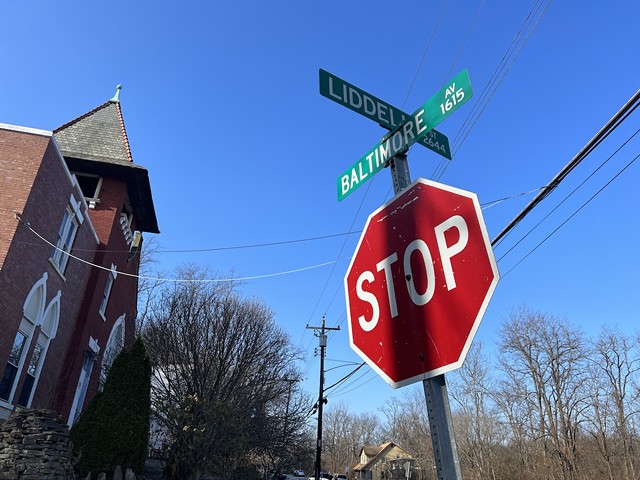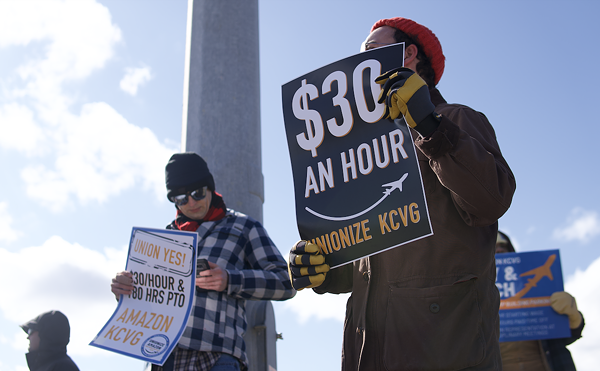Supporters of the constitutional amendment that enshrined reproductive rights in Ohio’s Constitution believe putting it on the ballot in 2023 was a key to its success, and they also believe the aftershocks will be felt at the ballot box in 2024.
The November Issue 1 campaign came to a head with a coalition of supporters, a galvanized public and an August campaign that strategists and analysts say only built on the momentum.
“There was an awakening here and people started to realize there was this power grab and an assault on democracy,” said Jeff Rusnak, of R Strategy Group.
Amendment strategy
Rusnak was a lead strategist for Ohio Physicians for Reproductive Rights, the group of medical professionals who began and led the campaign for a constitutional amendment that would lead to abortion rights and other reproductive treatments being inserted into the state constitution.
Not only did Rusnak hear from the doctors already onboard with the measure that a “massive crisis” was happening in the medical profession, having to do with their rights to make medical decisions with their patients, but he also saw polling and research that showed a range of support for reproductive rights.
“This was one of those unique and rare opportunities where the voters overwhelmingly disagree … with the legislature,” Rusnak told the OCJ.
The legislature had spent many years compiling regulations on abortion into state law, from a ban on abortion at six weeks gestation (now held up in court), to 24-hour waiting periods and strict requirements on transfer agreements between hospitals and abortion providers.
They laid the groundwork for “trigger bans,” abortion regulations specifically set to take place with the downfall of Roe v. Wade, which ultimately took place in June 2022 with the U.S. Supreme Court’s decision in Dobbs, and after Issue 1 was approved by voters this past November, legislators still floated ideas to undermine the amendment.
With an obviously anti-abortion GOP supermajority in the General Assembly, Rusnak convinced the OPRR that a constitutional amendment was the way to go for abortion rights in Ohio.
Rusnak said because of the presidential election and other big-name primaries going on in 2024, “conventional wisdom” and legacy advocacy groups leaned toward waiting to put the amendment on the ballot in that year as well. But with three decades in Ohio strategy, Rusnak pushed back, saying that while turnout might been better in 2024, it may not have been the turnout they needed.
“Even if there’s a high turnout, it doesn’t necessarily benefit these types of issues or candidates who support these types of issues,” he said.
After looking at the campaign success in Michigan and the data on costs of going to the ballot in ’23 versus ’24, OPRR and it’s fellow abortion rights advocates were sold on the goal of November 2023.
After a summer of signature collecting and months of campaigning, Issue 1 passed in Ohio with 57% of the vote, according to Ohio Secretary of State numbers.
“There are campaigns and opportunities maybe once in a generation or even more than that, and this was one of them where all the parts came together and this was a very powerful issue that voters cared deeply about,” Rusnak said.
The mobilization that happened during the abortion rights campaign was spurred on by the resounding defeat of August’s Issue 1, a proposed amendment to raise the threshold needed for voters to approve a constitutional amendment from 50% to 60%. That attempt to change the numbers before a general election had its effect on people, even those who may not have supported the abortion amendment.
“Ohio voters understood there was something undemocratic about changing the rules in the middle of the game,” said Professor Steven Steinglass, dean emeritus at Cleveland State University’s College of Law.
Ohio Secretary of State and U.S. Senate Republican primary candidate Frank LaRose told Meet the Press after the measure was defeated that his leadership in support of the August proposal came from the idea that raising the needed approval percentage would have a “moderating influence.”
“I thought it would have been a really good thing for Ohio to have that as well, so that if you were going to do something as permanent as changing our constitution, you had, again, that moderating influence of bringing a much larger coalition together,” LaRose said at the time.
Steinglass said the mistakes that were made with the August measure had the opposite effect, bolstering the movement against it.
“(August Issue 1 creators) committed what I would say was a serious act of political malpractice,” Steinglass. “They helped to build the coalition that beat the 60% proposal in August and supported reproductive rights in November.”
Both the defeat of August’s Issue 1 and the success of November’s Issue 1 proved to Rusnak that there was a need for more direct democracy in Ohio when representative democracy seemed to be suffering.
“Those in power, those making laws are so far removed from what the public wants,” Rusnak said. “And the public put their foot down and said ‘enough.'”
2024 elections
The momentum from the two elections of 2023 “can only help” keep the voters engaged for the next year, according to Rusnak.
“I think people are more than willing to speak out, they’ve been given permission to do that and I think it makes voters feel like they’re not alone,” he said.
In the U.S. Senate race, the issue of abortion has already come up as the campaigns ramp up. Democratic incumbent U.S. Sen. Sherrod Brown publicly supported the reproductive rights amendment and placed himself as the pro-choice candidate versus his potential Republican opponents, LaRose, the Trump-endorsed Bernie Moreno, and state Sen. Matt Dolan.
LaRose is well-documented in his opposition to the reproductive rights constitutional amendment, even expressing some support for a national abortion ban. In the Meet the Press interview prior to the November general election, LaRose called the abortion amendment “really radical.”
LaRose has said he voted in favor of the six-week abortion ban as well, calling it a “good standard.”
Moreno expressed staunch opposition to the Ohio amendment, making unfounded comments before the amendment was passed that it would allow a rapist to “force” a pregnant person into an abortion. He has also said he would support a national abortion ban if he became a U.S. senator.
Dolan went to Twitter to say the abortion amendment was “goes too far,” joining the Ohio GOP in opposing the measure.xwzqDolan also voted in support of an Ohio Senate resolution that formally opposed Issue 1 in November, even signing on as a cosponsor of the bill, which passed along party lines.
This weekend, our campaign marched, rallied and is knocking doors to protect Life. #Issue1 goes too far. It’s too extreme for Ohio. Thank you to @ChairmanAlex and the @ohiogop for hosting me and fellow state leaders in Columbus this morning. Vote #VoteNoOn1 pic.twitter.com/gnHPz6ZN38
— Matt Dolan (@dolan4ohio) October 7, 2023
On his U.S. Senate campaign website, Dolan pledges to “uphold the Hyde Amendment and use the full power of my platform and office to protect the unborn.”
The Hyde Amendment prohibits federal funding from going to abortion services or “health benefits coverage that includes abortion,” according to the Congressional Research Service.
The judicial ballot
The public’s referendum on Ohio abortion law could also spell the future for issues like redistricting.
“Getting it on the ballot is a little easier now, because we have the playbook, and redistricting is another example of one of those democracy issues,” Rusnak said.
Redistricting and abortion have already seen the inside of the Ohio Supreme Court’s chamber, but with judicial candidates also up for election this year, the issues will be on voters minds when it comes to who will stand on the bench as well.
“No matter how carefully drafted statutory, or in (the abortion amendment’s) case, constitutional … it often requires interpretation,” Steinglass told the Capital Journal.
While Steinglass has said there isn’t currently any litigation against the abortion amendment that he thinks will hold up, the state supreme court makeup “will have an impact.”
Incumbent justices Michael Donnelly, Melody Stewart, and Joseph Deters are all running for reelection to the state’s highest court, though Deters is not running for the seat for which he was appointed by Gov. Mike DeWine. He will be running for Stewart’s seat. He received the Ohio GOP endorsement in an effort to “elect strong, conservative justices.”
The Ohio GOP has also endorsed a challenger to Donnelly’s seat, Hamilton County judge Megan Shanahan, and Franklin County judge Dan Hawkins to fill the vacated seat of Deters.
Appeals court judges Terri Jamison and Lisa Forbes are also running for seats on the state supreme court. Donnelly, Stewart, and Forbes have all been endorsed by the Ohio Democratic Party.
This story was originally published by the Ohio Capital Journal and republished here with permission.
Follow us: Apple News | Google News | NewsBreak | Reddit | Instagram | Facebook | Twitter | Or sign up for our RSS Feed






